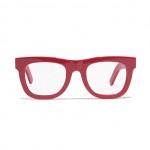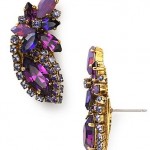Eye Opening! Dr. Susan Resnick, O.D., F.A.A.O
About a year ago I became frustrated with the length of my arms. I know that sounds a little strange, but if you’re around 40 you know exactly what I mean! I went to the drugstore and I bought some reading glasses and suddenly it didn’t matter that I wasn’t related to Stretch Armstrong. I had presbyopia and unless an extra serving of carrot sticks and some eye exercises could reverse or slow down the process reading glasses were my new norm.
Though I was seeing 20/20 with my prescription for distance and my presbyopia was corrected with readers I was hopeful that there would be a simple solution to put a stop to all this “eye-aging” business, so I jumped at the invitation to meet the distinguished NYC based, Dr. Susan Resnick, O.D., F.A.A.O,. I realized most of us seek a second opinion when a medical doctor gives us an unfavorable diagnose…wasn’t this the same thing? I’d get get a second opinion, and an extremely well-respected one at that!
What is Presbyopia?
Dr. Resnick explained that presbyopia is basically the natural aging process of the eye “where reading vision becomes more difficult and a separate prescription is required or when the nearsighted patient has to remove their distance eyeglasses to see close objects clearly” due to the eye’s internal lens becoming less elastic and less able to change shape to refocus. Resnick says “it typically starts around age 40 but can vary depending upon factors which may include genetics, pupil size and distance prescription.”
Dr. Resnick informed me “there is no cure for presbyopia and eye exercises typically do not influence the age of onset or rate of progression.” Even though “general health and good nutrition might be a factor as to when it first appears, there are no definitive studies to quantify this.”
What Can Be Done?
- Progressive addition eyeglasses are multi-focal glasses that allow more than one vision field to be in a single lens without any line of distinction between the fields themselves. They correct all distances (near and far) with lenses that have a smooth transition for different focal lengths.
- Monovision is the process of having one eye focused at a distance while the other is focused at near. After about a week the person’s brain automatically and seamlessly adapts to this way of vision, allowing you to seamlessly see near and far. Though some close-up activities might still require reading glasses it can help tremendously. Monovision is usually obtained through contact lenses (with different prescriptions for each eye) but it can also be had through refractive laser techniques like Lasik or PRK.
- Contacts for Presbyopia. Dr. Resnick likes Acuvue OASYS for Presbyopia contact lenses which allow for a very smooth transition between distance and near focus. A huge bonus with these lenses is that they contain Hydraclear–an internal wetting agent–making them better than other contacts for patients with dry eyes, a common condition for those in this age group. Another plus for Acuvue OASYS for Presbyopia lenses is that they have built-in UV blockers to prevent cataracts, also common as we age. If you’re a contact lens wearer with presbyopia this is an ideal choice for most.
To determine which option is best for you, Dr. Resnick recommends you and your doctor take the following into consideration: lifestyle, type of visual tasks, prescription and ocular physiology. Most patients choose both contact lenses and glasses but each offers different benefits. Those with very active lifestyles might choose contacts as their primary choice whereas those who have specific, prolonged and critical visual tasks might find glasses would be more appropriate. There are also those who are very visually sensitive, ie. are frustrated with anything less than 20/20, and multifocal contact lenses might not be an option because the images are not quite as sharp at all distances as they are with eyeglasses. This has to do with the smaller optical zone in contact lenses as compared to eyeglasses.
Since I’m usually in contact lenses for distance and I rarely wear my eyeglasses I was most attracted to the idea of the Acuvue OASYS for Presbyopia which would get me out of my readers and allow me to see both near and far without having to go the monovision route. Unfortunately for me, I’m “visually sensitive” so I’m not a candidate. So for me, readers it is! xoxoNancy

























Recent Comments